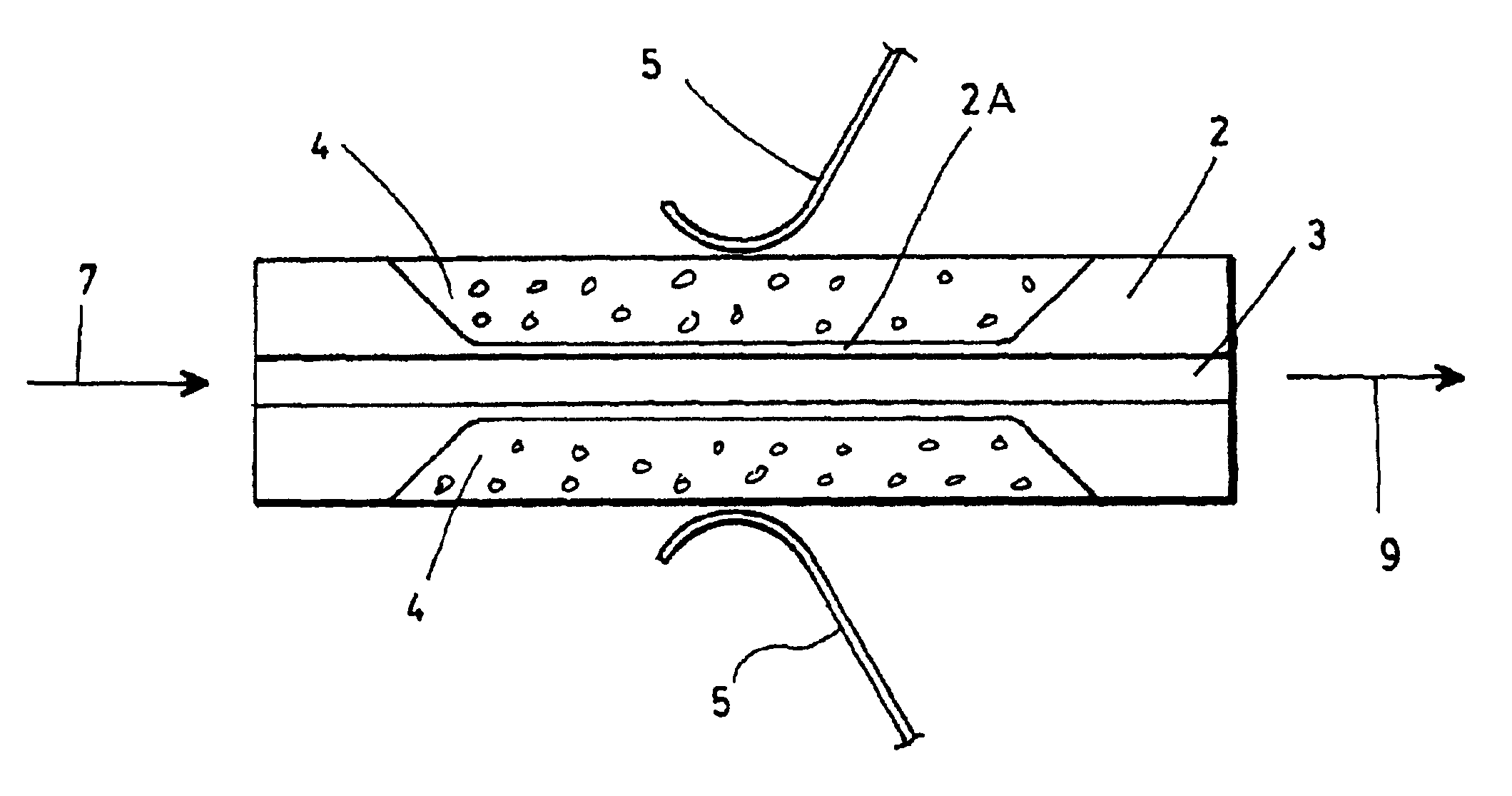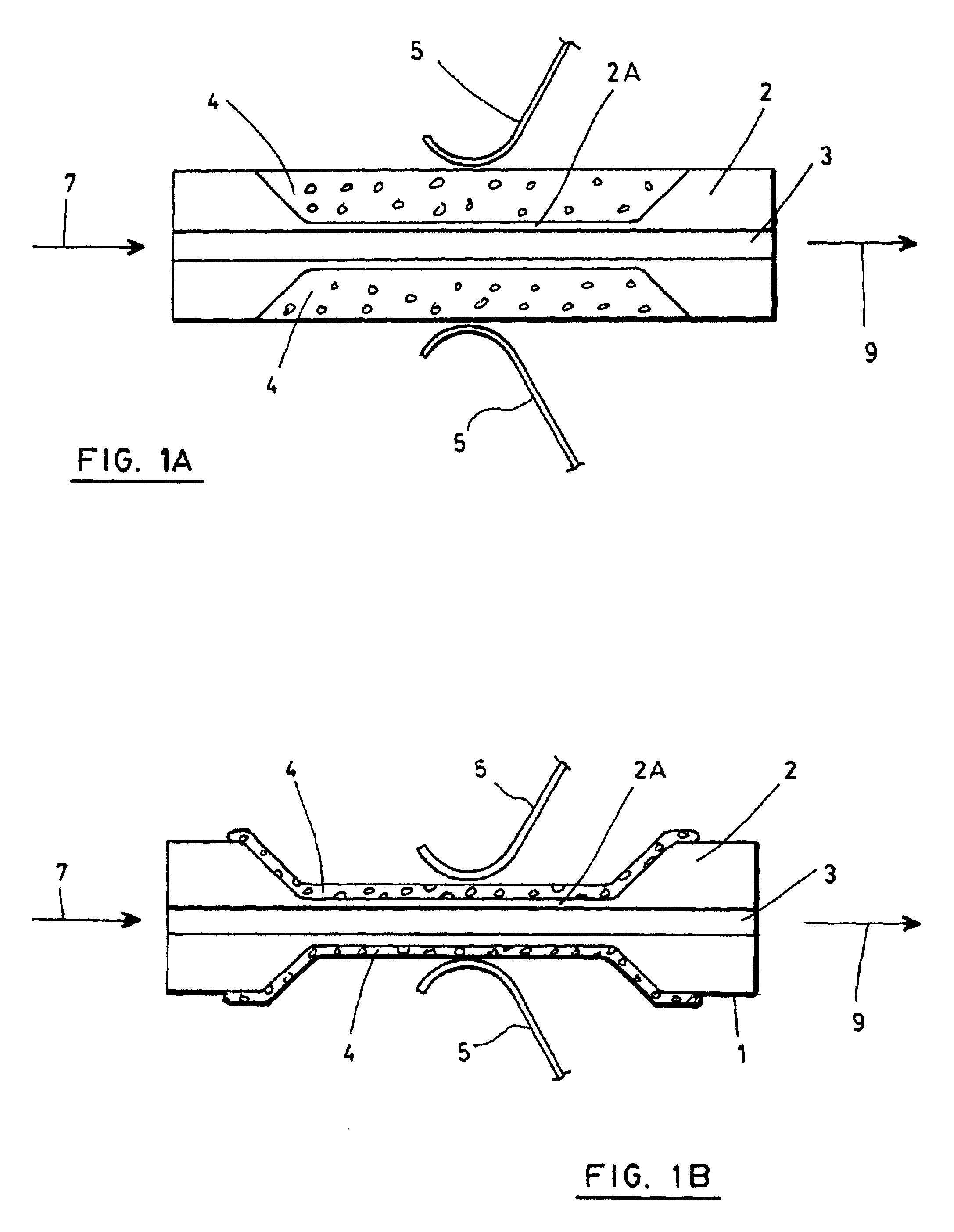Microporous glass waveguides doped with selected materials
a micro-porous glass and waveguide technology, applied in glass making apparatus, instruments, cladding optical fibres, etc., can solve the problems of coupling losses between the two waveguides, polarization dependence on the transmission properties, and devices using electro-optic materials are limited to planar
- Summary
- Abstract
- Description
- Claims
- Application Information
AI Technical Summary
Benefits of technology
Problems solved by technology
Method used
Image
Examples
Embodiment Construction
In order to properly situate the present invention, it is important to define what is meant in the present description by "porous glass", or "microporous glass" or "porous silica". These expressions, which can be used interchangeably, designate a glass, which is generally silica-based, containing a myriad of small, interconnected holes. These holes are called pores or micropores, and their size is almost always less than 10 nm. The holes are obtained in the glass by performing a chemical attack of a boron-silica glass, where the boron and alkaline constituents have been separated from the silica by a high temperature separation of phase and then placed in a solution by chemical attack, leaving a skeleton full of holes.
This type of porous glass must not be confused with porous soot, consisting of microparticles of silica and which is obtained by combustion of silicon tetrachloride. This agglomerate is often called, in the literature, porous glass, but it is not the same porous glass ...
PUM
| Property | Measurement | Unit |
|---|---|---|
| size | aaaaa | aaaaa |
| temperature | aaaaa | aaaaa |
| optical activity | aaaaa | aaaaa |
Abstract
Description
Claims
Application Information
 Login to View More
Login to View More - R&D
- Intellectual Property
- Life Sciences
- Materials
- Tech Scout
- Unparalleled Data Quality
- Higher Quality Content
- 60% Fewer Hallucinations
Browse by: Latest US Patents, China's latest patents, Technical Efficacy Thesaurus, Application Domain, Technology Topic, Popular Technical Reports.
© 2025 PatSnap. All rights reserved.Legal|Privacy policy|Modern Slavery Act Transparency Statement|Sitemap|About US| Contact US: help@patsnap.com



